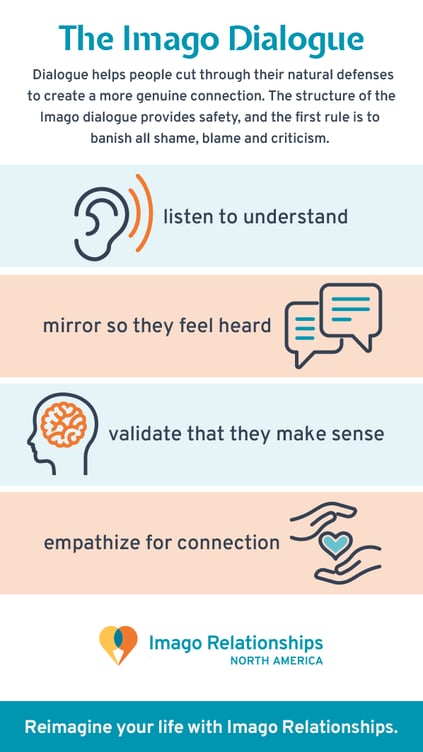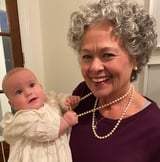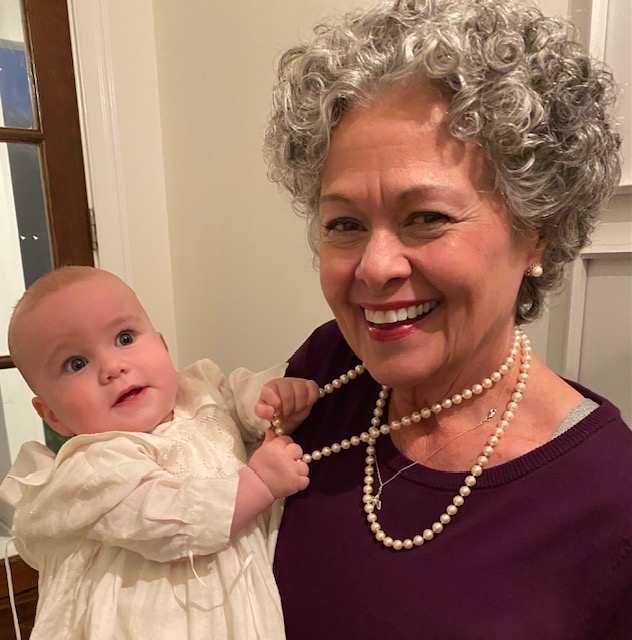
Relationships are Good for Your Heart
The heart has become the symbol of February's most celebrated day, Valentine's Day.I find it fascinating that my 2-year-old granddaughter's favorite shape is a heart. I don't think she yet associates it with romantic love, but it's a universal symbol that speaks to our "hard-wired" need for human connection.
As infants, we cannot survive without a connection to our caregivers. We need others to survive and thrive. As we grow and become adults, most of us desire a connection with one special person with whom we hope to remain connected for a lifetime. Finding “our person” is good for our health and longevity. Studies have been done that prove the need for human connection.
The Study of Adult Development at Harvard Medical School began in 1942 and continues today in 2024. This study has shown that people who maintain lasting human connections have better health in old age. Here's a quote from the Harvard study to share the importance of love and connection as we age:
- "When we gathered together everything we knew about them at age 50, it wasn't their middle-age cholesterol levels that predicted how they were going to grow old," Robert Waldinger, the current leader of the study, said during a recent TED Talk. "It was how satisfied they were in their relationships. The people who were the most satisfied in their relationships at age 50 were the healthiest at age 80."
If studies prove that love and connection help us lead better lives and are good for our hearts and organs, why are couples losing their way in their relationships?
Focus on the Positive Stuff in Your Relationship vs. the Negative Stuff
As an Imago Relationship therapist who helps couples with relationship struggles, I appreciate February as a month to celebrate and focus on the good that relationships provide.
Relationships are a bit like a ship at sea, so when I begin working with a couple, I look for a way to help them turn their ocean liner away from storms and back on course with small, incremental changes. When a couple has lost their way, it's like being in a storm that grows stronger and leaves both partners feeling lost, hopeless, and no longer a team.
When a couple comes to relationship therapy with overwhelming negative energy, many have lost their way because they're holding onto all the negative interactions in the space between them. The couple has lost sight of what they had in their early days together - the loving feelings of connection. The couple’s focus has been blinded from the positive so that only the negative is in their perspective.
The good news is, there's always hope! Like a ship lost at sea, the relationship must be turned around to see the sun again. The decks must be cleared of the negative stuff to change from off course to its positive direction.

Positive Change Starts With Self-Awareness
Did you know it takes five positive interactions to neutralize one negative interaction? So, the first step in a positive change is to remove negative behaviors from the space between you and your partner. Start by asking yourself a few questions to become more self-aware about your part in the negative relationship dynamic:
- How am I affecting the space between me and my partner?
- How is my behavior landing on my partner?
- Since I can control only my behavior, how can I do the next right thing?
- How can I clear my negativity and take a positive step toward a healthier and happier connection with my partner?
After examining your role in the relationship, work on replacing your own negative interactions and behaviors with positive ones. Persistence, practice, and a toolbox of good ideas and examples can help you change your attitude and behavior to benefit you and your relationship.
Matters of the Heart: With The Five Love Languages
The number five comes to mind again when thinking about creating healthy relationships with Gary Chapman's book, The Five Love Languages. Written over three decades ago, many still read and benefit from Gary's book about how to give and receive love. If you aren't familiar with his five love languages, they're as follows:
- Acts of Service
- Quality Time
- Receiving Gifts
- Words of Affirmation
- Physical Touch
Giving and receiving love with these five gifts is positive for your relationship. So, do you know your love language? Do you know your partner's love language? Or what about your child's love language?
Knowing which love languages to use with those you hold dear can be powerful in building and maintaining a healthy and positive connection. If you still need to figure out your partner's love language, find out and stretch yourself to provide that type of love. If you can stretch, you'll notice increased joy in the space between you and your partner.
As my mother always said, "Actions speak louder than words." So, take action and grow to give your partner the love they respond to most. After all, who wouldn't be interested in receiving that personalized gift of love?

Grow and Evolve: Lead by Example For Your Family
February is the perfect month to focus on creating a more positive and healthy relationship. Because humans, especially children, learn by example, it's essential to model a healthy relationship. Modeling a working parental system for your family is crucial to a peaceful and loving household. If the parental system works well, the rest of the family system will follow.
When Mom and Dad communicate with positive listening skills and mirror with understanding, they set the stage for modeling this behavior for the children. Children learn by what they see, not what they're told. Children will copy what parents do rather than what they say. Healthy and happy parents who model this behavior can create a positive ripple effect within the family that is so large it's beyond measurement.
Using The Imago Dialogue: a Family Gift
Recently, an Imago colleague wrote a story about one of her couples who is in a blended family with stepchildren. The couple began using the Imago Dialogue during their conversations at home with simple or minor frustrations in their relationship.
One day, the couple was sitting in the living room using the Imago Dialogue to discuss a frustration when one of their children walked past. They noticed the child walked past several times while they were in dialogue, but each time the child walked past, it was slower and slower. Of course, they thought their child might be listening and interested in their discussion. However, they really connected, heard one another, and decided to continue their dialogue.
A few days later, that same child came to the stepfather about something bothering her and asked him to have the same type of conversation she'd overheard between him and her mom the other day. So, the stepdad briefly explained how the Imago Dialogue process works so they could begin talking.

After having a dialogue with his stepdaughter, he saw the value of Imago Dialogue for not only him and his wife but the entire family. He realized Imago Dialogue could help them all communicate better in the family. After all, he could genuinely listen to his stepdaughter much better when he stopped what he was doing to dialogue with curious ears, mirroring what she was saying and validating how she felt about her frustration. He could also share with his stepdaughter how he felt, and she could understand him more.
Later on, probably after some time to process deeper, the stepfather returned to a dialogue between him and his stepdaughter to further validate her experience as one of his stepchildren. He wanted to understand further the areas the child found most challenging in the blended family and as his stepdaughter. He began to have more understanding and compassion not only for this one child but ready to bring this type of communication into the home for the whole family, not just for him and his wife.
This beautiful story of an Imago Dialogue between a stepfather and his stepchild exemplifies a wonderfully blended family where both parents value harmony and connection in their home. Imago Dialogue can promote and support a connection between couples and family members. That deep connection is vital to us all, especially to thrive in love and relationships together.
For a healthy, happy, and satisfying long life, it's essential to live in positive relationships, be self-aware, know how to love one another and embrace growing and evolving. There is a science to love and to your heart. Your human connection to one another matters.
If you're ready to invest deeper in your relationships and increase your connections, we're here to help with the gift of the Imago Dialogue and many more Imago tools. Check out our virtual and in-person Imago Relationships Workshops and Imago Relationships Therapy.
Discover more about Imago with our Imago Professional Membership, Imago Professional Facilitators, Imago Professional Training, and Imago Insights Education.

This blog post was written by Barbara Jo Koehnemann, LMFT.
Barbara Jo is a Licensed Marriage and Family Therapist, Certified Imago Therapist, and Advanced Imago Clinician.
She has a Bachelor's Degree in Communication from Mercer University, holds a Master's in Marriage and Family Therapy from Mercer University School of Medicine, and enjoys a private practice at Tapestries Counseling Center in Nashville, TN.
Barbara Jo says, "The most satisfying experience in my work is teaching couples and families new ways to communicate and increase their connection. It's an honor and privilege to witness their progress every day."As a Licensed Marriage and Family and Certified Imago Relationship Therapist, improving communication and increasing connectivity keeps her motivated, inspired, and charged to do what she does daily.
Barbara Jo offers both in-office and online sessions and accepts new couples who desire a better relationship. She welcomes the challenge of all relationships and looks forward to helping you find new hope in yours.
In her free time, she loves outdoor activities or whatever her grandchildren want to do. "Grandparenting is the best part of life so far" is her theme at this stage of life.



